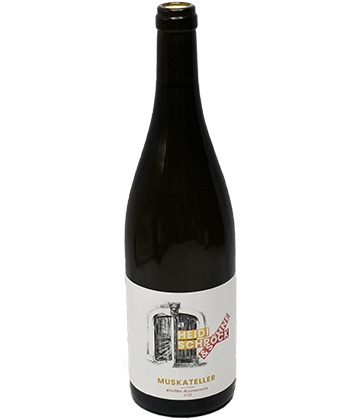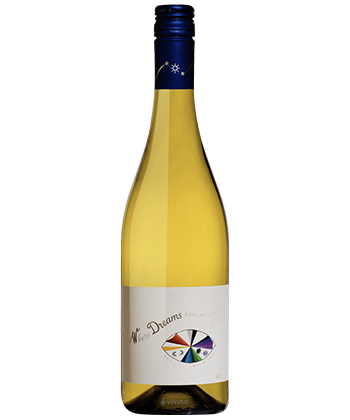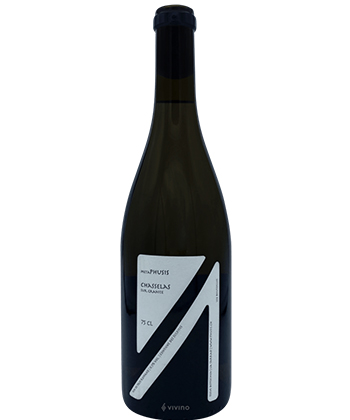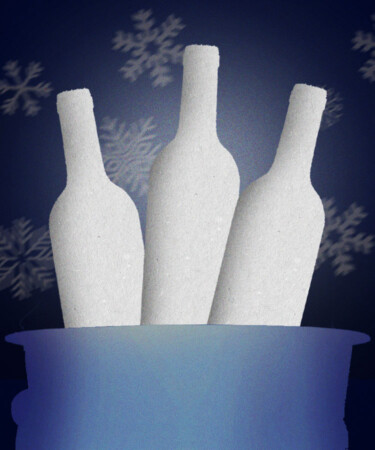If you’re someone who switches to red wine in the winter and doesn’t look back until the weather starts to turn, it’s time to reconsider. It’s an out- of-date way of thinking that says chilled whites aren’t right for the middle of the winter. White wine can’t be reduced to a summer drink — some styles are better suited for the winter, when their richer, creamier characteristics can be better appreciated. Consider also some of the fattier dishes that we crave in the winter. Sure, a red could pair well — but so could a mineral-forward white wine with a little salinity to cut the fat. To get us started, we asked 13 sommeliers to tell us their favorite white wines for winter. Here’s what they recommended.
The Best White Wines for Winter, According to Sommeliers
- White Burgundy
- Viognier
- Oaked Chardonnay
- 2021 Heidi Schrock Muskateller
- Jermann “Where Dreams Have No End” Chardonnay
- Chenin Blanc
- Soave Classico
- Skin contact Ribolla Gialla
- Chardonnay
- Steve Bettschen metaPhusis Chasselas
- Vermentino
- Jacquère
- White Rioja
“White Burgundy. I’m cheating a little bit here, ’cause I think you should drink white Burgundy year-round, but there’s enough weight and texture to a good French Chardonnay to balance the richer dishes we tend to crave in colder weather.” —Thomas Mizuno-Moore, senior beverage manager, Aba, Antico Posto, Beatrix, Ēma, L. Woods, Chicago
“The best white wine for winter is Viognier, and more specifically, the rich bottlings that come from Condrieu in the Northern Rhône. These wines have body, structure, and finesse and, for me, they are the quintessential winter white wines.” —Francis Kulaga; certified sommelier, beverage director, and general manager; Birch & Rye; San Francisco
“Winter may not traditionally scream white wine, but when you break down the flavor profile of a lot of them, it may not be as wild of an idea as you may think. Classic oaked Chardonnays with partial malolactic fermentation give a lot of rich, buttery qualities with a backbone of spices and vanilla.” —Scott Taylor, beverage director, Harris’ Restaurant, San Francisco

“2021 Heidi Schrock Muskateller.” —Katie Singer, beverage manager, Bacchanal, New Orleans

“For winter, Jermann ‘Where Dreams Have No End’ Chardonnay comes to mind. It has aromas of jasmine, incense, and warm peach meshed with layers of apple, almond, and candied ginger, making it a perfect winter white. It pairs exceptionally with seafood dishes, like our scallops served on carrot purée or a market fish served with fregola in puttanesca.” —Haydee Hernandez, general manager, Sassetta at The Joule, Dallas
“While I am forever a French Chardonnay kind of gal, Chenin Blanc has recently piqued my interest in a way that I could not have imagined. More specifically, a dryer style from the Loire Valley in France which has so much texture and loads of character. I adore its ability to morph with different global cuisines. Exotic and vibrant, with ginger and passion fruit, [and] a touch of sweetness and florality, these wines are very desirable. That paired with the zippy acidity makes for the best food and wine pairings. It’s a great way to keep away the seasonal blues.” —Liz Martinez, sommelier and general manager, The Apparatus Room, Detroit Foundation Hotel, Detroit
“I reach for richer styles of Soave Classico. Pieropan produces one of my favorite examples from their La Rocca vineyard, which is made from 100 percent Garganega grapes and aged on the lees in oak barrels that partners well with mushroom risottos, seafood, and even grilled meat.” —Nick Schulman, director of wine, RPM Italian, Washington, D.C.
“Winter is the perfect time for skin contact wines, particularly the skin contact wines made from Ribolla Gialla along the border of Friuli and Slovenia in northeastern Italy. These are white wines ‘made like red wines’ with extended time on their skins. This process adds layers of complexity including tannins, candied fruits, and increased mid-palate texture. They are perfect wines to work across a range of dishes, from lighter to heartier.” —Jason Alexander, director of wine, Che Fico & Che Fico Alimentari, San Francisco
“This time of year, I always find myself going to bright, ripe, and occasionally weighty Chardonnay. Cold weather white wine braises, richer cheese courses, or even just wanting something that drinks like wearing a warm blanket all want wines with mineral tonality, and luscious flavors and textures. Though I love falling back to white Burgundy, cool but sunny places like Santa Rita Hills offer wines with both opulence and tension that make you want to just eat an entire wheel of a bloomy rind triple cream cheese in one bite. Liquid Farm’s ‘White Hill’ bottling has been on my mind constantly and is this racy yet broad, mineral yet generous fruited wine that makes you seek food from the first sip.” —John Kelley, chief sommelier, Atlas Restaurant Group, Baltimore

“White wines in the winter are so much fun! In Switzerland, Steve Bettschen’s metaPhusis Chasselas is a go-to at Jônt. I also adore Silvia Puig’s En Números Vermells Garnatxa Blanca. Both have such a great texture that I love to pair with heartier dishes like roasted game birds and root vegetables.” — Gabriel Corbett, sommelier, JÔNT, Washington, D.C.
“An amazing winter white wine is Vermentino, specifically from the Maremma in the south of Tuscany. We tend to choose heartier and more complex dishes in winter: rich pastas, risotto, soups, roasts, slow-cooked meats, and warm comforting foods. This also leads to usually choosing more structured and warm wines, including whites.” —Camilla Battoni, certified sommelier and general manager, Centrolina and Piccolina, Washington, D.C.
“I think I have to return to one of my first loves, which is Jacquère from the Savoie region of France. It’s just so delicate and delicious, and it has always conjured up images of snow-capped peaks seen from a warm cottage in the darkest times of winter. Crisp acid, delicate nose. Almost crystalline in nature. We need to be drinking so much more of it, and this is the perfect time of year for it.” —Ian Lokey, sommelier and beverage director, Sushi Note, Los Angeles
“White wines from Rioja are among my favorite full-body wines that are perfect for the colder winter weather. These wines are usually made as a blend of Viura with other varieties, and it is common to be aged in barrels to add complexity. In white Riojas, you can find an array of flavors, but many examples display aromas of preserved lemon, roasted pineapple, coconut, pine nuts, and tarragon. These wines are the perfect pairing to any roasted fish, chicken, or pork dishes.” —Nial Harris Garcia, beverage director, The Conrad, Washington, D.C.
